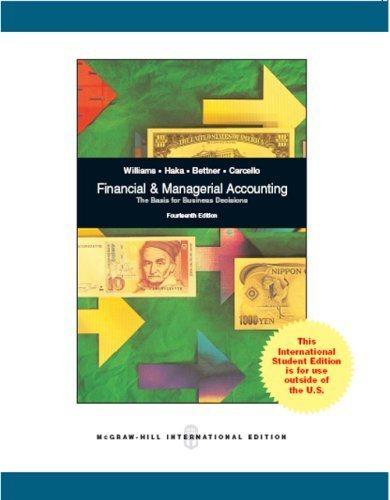The cash transactions and cash balances of Banner, Inc., for July were as follows: 1. The ledger
Question:
The cash transactions and cash balances of Banner, Inc., for July were as follows:
1. The ledger account for Cash showed a balance at July 31 of $125,568.
2. The July bank statement showed a closing balance of $114,828.
3. The cash received on July 31 amounted to $16,000. It was left at the bank in the night depository chute after banking hours on July 31 and therefore was not recorded by the bank on the July statement.
4. Also included with the July bank statement was a debit memorandum from the bank for $50 representing service charges for July.
5. A credit memorandum enclosed with the July bank statement indicated that a non-interest-bearing note receivable for $4,000 from Rene Manes, left with the bank for collection, had been collected and the proceeds credited to the account of Banner, Inc.
6. Comparison of the paid checks returned by the bank with the entries in the accounting records revealed that check no. 821 for $519, issued July 15 in payment for office equipment, had been erroneously entered in Banner’s records as $915.
7. Examination of the paid checks also revealed that three checks, all issued in July, had not yet been paid by the bank: no. 811 for $314; no. 814 for $625; no. 823 for $175.
8. Included with the July bank statement was a $200 check drawn by Howard Williams, a customer of Banner, Inc. This check was marked “NSF.” It had been included in the deposit of
July 27 but had been charged back against the company’s account on July 31.
Instructions
a. Prepare bank reconciliation for Banner, Inc., at July 31.
b. Prepare journal entries (in general journal form) to adjust the accounts at July 31. Assume that the accounts have not been closed.
c. State the amount of cash that should be included in the balance sheet at July 31.
d. Explain why the balance per the company’s bank statement is often larger than the balance shown in its accounting records.
Balance sheet is a statement of the financial position of a business that list all the assets, liabilities, and owner’s equity and shareholder’s equity at a particular point of time. A balance sheet is also called as a “statement of financial...
Step by Step Answer:

Financial And Managerial Accounting
ISBN: 12
14th International Edition
Authors: Jan R. Williams, Joseph V. Carcello, Mark S. Bettner, Sue Haka, Susan F. Haka





